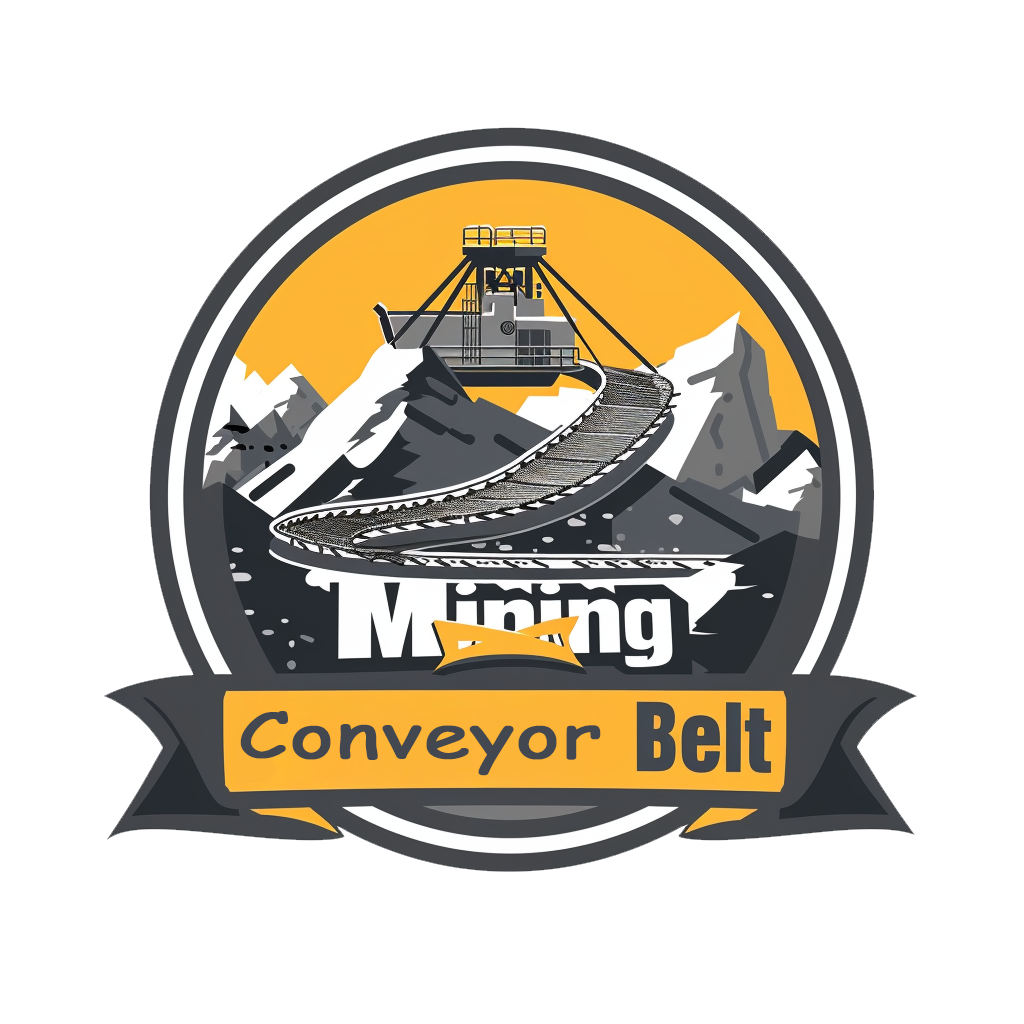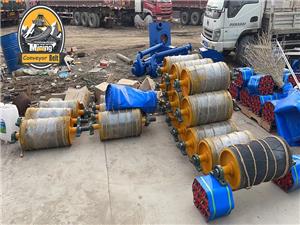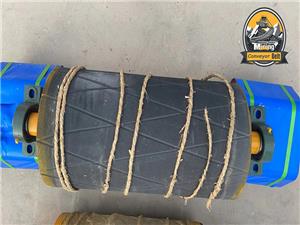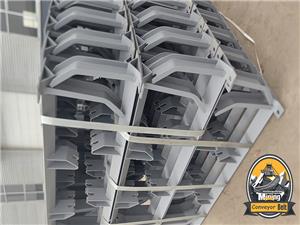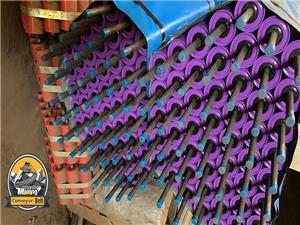How to reduce the occurrence of conveyor belt tearing accidents?
As an old user of the crusher, you must have encountered belt tearing of the equipment more or less. Belt tearing accidents can be roughly divided into two categories: longitudinal tearing and transverse tearing, of which longitudinal tearing accounts for more than 90%. This article takes longitudinal tearing as an example to analyze the causes of tearing.
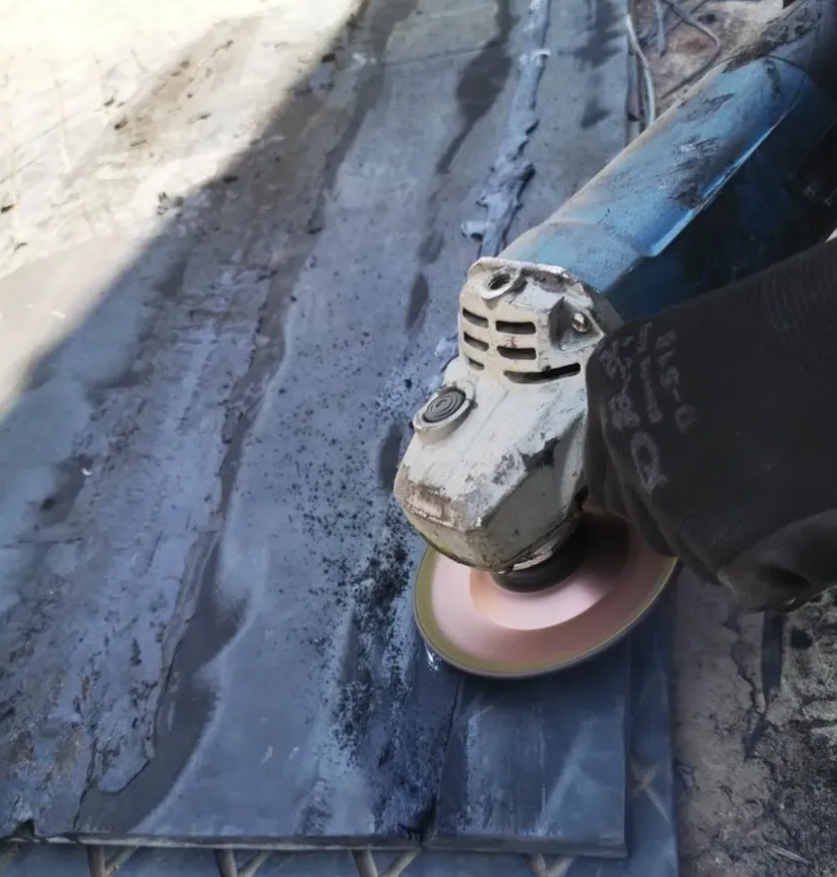
1. Causes of belt tearing of belt conveyor
1. Foreign body scratches
Foreign body scratches are the main cause of belt tearing, which can be divided into three situations: one is that sharp foreign objects directly pierce the belt and get stuck between the sealing box and the roller to cause tearing; the second is that foreign objects are stuck in the lower part of the feeding port and cannot touch the belt when feeding, but the center of gravity of the belt moves up when the belt is unloaded, thereby scratching the belt; the third is that foreign objects are stuck in the gap between the rollers and cannot touch the belt when the belt is unloaded, and the center of gravity of the belt moves down during normal feeding, thereby scratching the belt.
2. Belt deviation
When the belt deviates seriously, folding may occur on one side, and the belt may be scratched by the roller bracket or other objects, or even torn. Belt tearing caused by belt deviation generally only tears the edge of the belt and does not appear on the inside of the belt.
3. Material jamming
Large pieces of material get stuck at the discharge port, and a large amount of material is piled up, causing the belt to not operate normally. Large pieces of material scratch the belt. If they cannot be removed in time, the belt will tear. For the steel industry, large pieces of material have been removed before loading, and such situations rarely occur.
4. Core tearing (this type of tearing only occurs in steel rope core belts)
Due to long-term use, the steel rope core of the steel rope core belt will show varying degrees of wear. In severe cases, the wire rope will be exposed or even broken. When the broken wire rope reaches a certain length, it may be entangled at any part of the belt conveyor, causing the belt to tear.
5. Improper installation of auxiliary equipment
In addition to the threat of the material itself, the falling off of the conveyor belt itself during transportation is also a major cause of tearing. For example, the falling off of the vibrator liner, the crusher hammer, the discharge port adjustment stop, etc. may cause the conveyor belt to tear.
6. Blockage causes tearing
The transfer chute is small, which easily hinders the passage of materials and impurities, causing the conveyor belt to tear.
7. The middle roller falls and causes tearing.
The conveyor belt is directly pressed on the bracket supporting the middle roller. The heavy load makes the conveyor belt press the bracket tightly, and the bracket cuts through the conveyor belt like a knife, causing tearing.
8. Tearing at the head of the machine
Because the head is full of materials, the materials are wedged into the connection beam between the roller and the two sides of the head of the machine, causing the belt to tear; or the scraper of the head of the machine is caught by sharp foreign objects such as metal wire, causing the belt to tear.
9. Tearing caused by failure of conveyor parts
If the end cover of the roller is not welded well, the rotating end cover will cut the conveyor belt like a rotating blade. When the wire rope in the conveyor belt breaks, the broken wire rope head will be exposed from the joint, sticky mouth or severely worn part of the conveyor belt to the outside of the cover rubber. When the exposed wire rope reaches a certain length, it may be twisted into the roller, roller, etc. As the conveyor belt runs, the wire rope is pulled out of the conveyor belt cover rubber, causing core tearing.
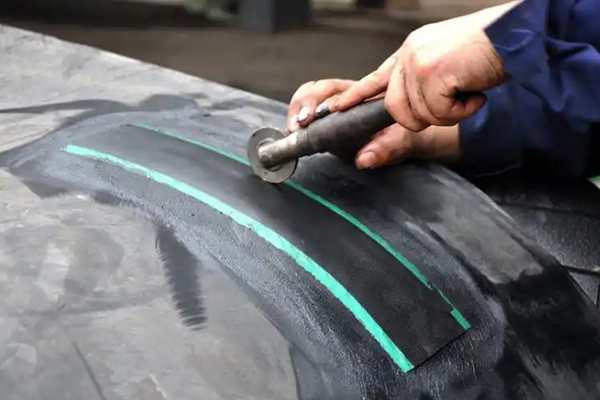
If the belt cannot be replaced immediately after tearing, you can use an electric drill to drill holes on both sides of the tear and then use wire to fix it for a short time. If the tear length is small, it can be repaired. If the tear is long, it is recommended to replace the belt. The repaired belt affects the use of the scraper and the sweeper, and is easy to cause dust. In the process of use, it is necessary to strengthen the inspection. If the repaired part is cracked or the edge is warped, it needs to be repaired again.
2. Common measures to prevent belt tearing
1. Actively prevent tearing from the source
Strengthen the control of material quality and add impurity removal equipment for impurity removal. Set up a large block removal device in front of the primary belt to reduce the large block material from entering the entire conveying system.
2. Increase the passing capacity of the chute
On the premise that the chute width is determined by the belt width, expand the chute outlet upward to increase its passing capacity as much as possible to avoid getting stuck with debris or large blocks of material.
3. Strengthen equipment management
Improve the inspection and inspection of belts, especially the management of other ancillary equipment of belt conveyors, such as the inspection of transfer funnels, sweepers and other facilities, to prevent sharp objects such as liner plates from falling off.
4. Improve the structure of the conveyor
By reducing the drop point height, adding a buffer grid, and allowing fine materials to fall before large materials, the impact can be reduced, the material speed can be reduced, and the possibility of impurities being inserted into the belt can be reduced.
5. Improve the structure of the belt itself
For example: improve the air tightness of the belt, prevent water from entering the core layer and rusting of the wire rope, and require manufacturers to strengthen quality control and improve quality.
6. Add a tear detection device
When the belt is torn, detect it as soon as possible in the shortest time, issue an alarm and shut down, minimize the tear length and reduce losses.
7. Use tear-resistant belts
Tear-resistant belts use wire ropes as longitudinal skeleton materials, and add transverse reinforcements to the belt body as tear-resistant layers, but the cost of this tear-resistant belt is about 20% higher than that of ordinary belts.
8. Use tear-detectable belts
Add a sensor with a closed coil to the belt, the detector is installed at the tear-prone part of the belt conveyor, and the detector is connected to the controller. If the belt is torn, the closed coil of the sensor is cut off. When it passes through the detector, the detector stops sending pulse signals. The controller cannot receive the pulse signal, and immediately alarms and shuts down. At present, this type of belt cannot be produced domestically and the cost is high.
Although there are no obvious signs of belt tearing, we only need to reduce the large pieces of materials and sharp objects entering the conveying system from the source, improve the quality and sense of responsibility of operators, strengthen equipment inspection and maintenance, correct deviation in time, eliminate the hidden dangers of belt tearing, and use advanced anti-tear monitoring and control systems to minimize the probability of belt tearing accidents, or even completely prevent accidents.
